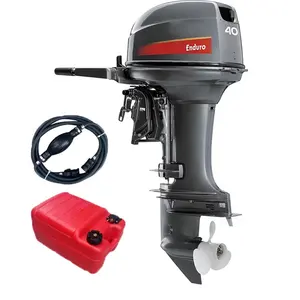
All categories
Featured selections
Trade Assurance
Buyer Central
Help Center
Get the app
Become a supplier

(78 products available)






































Volvo Penta boat engines are the heart of many boats, providing reliable and powerful performance on the water. These engines are known for their quality and innovation, making them a popular choice for boat enthusiasts and professionals. Volvo Penta offers a range of engines to suit different needs and preferences. Whether sailing a small yacht or a large motorboat, there is a Volvo Penta engine to match every boat and every journey.
Volvo Penta has two main types of boat engines: inboard engines and sterndrive engines.
Oil Changes
The oil and oil filter should be changed every 50 hours or at least once a year. Use the right oil and filter for the engine. The old oil and filter should be disposed of properly. Fresh oil helps protect engine parts from wear and a new filter traps any debris.
Cooling System
Check the coolant level regularly. Rinse the cooling system with fresh water after every use in salt or brackish water. The hoses, clamps, and fittings should be inspected for leaks or damage. These steps help the engine stay at the proper temperature.
Air Intake and Fuel System
The air filter should be cleaned or replaced every 100 hours of use or once a year. It is important to make sure the fuel filters are changed according to the schedule. They also need to be checked for moisture or contamination. Clean filters allow proper airflow to the engine and clean fuel to be delivered.
Electrical System
The battery connections should be checked and cleaned of any corrosion. The electrolyte levels in non-sealed batteries need to be topped off with distilled water. All wiring is to be inspected for signs of wear or damage. A well-maintained electrical system avoids starting issues and ensures reliable operation of components.
Propulsion System
The transmission oil and filter require changing every 200 hours of use or every two years, whichever comes first. Sail drive and pod drive systems need the lubricant replaced per the owner's manual schedule. All joints, shafts, and fittings should be greased using the proper marine-grade grease. The propulsion system is lubricated by these steps, which help parts move smoothly.
Hull and Trim
The hull needs to be inspected regularly for damage, wear, or osmosis. All anti-fouling paint should be reapplied as needed. The trim tabs and other adjustable parts require checking to ensure they function correctly and are properly aligned.
Regular Inspection
In between scheduled maintenance work, it is important to do regular checks of key systems like: the engine, drive system, fuel, oil and cooling systems, electrical systems, safety equipment and hull, deck and trim. This helps catch any issues before they become major problems. Anything that looks out of place should be investigated and addressed right away.
Scheduled Maintenance
Follow the maintenance schedule in the owner's manual for all: Engine, drive line, fuel, oil, cooling, electrical and hull, deck and trim systems. Use only genuine Volvo Penta parts for repairs. This ensures all systems stay in top condition and meet warranty requirements. Major work should be done by authorized Volvo Penta dealers or certified mechanics.
Choosing the right Volvo Penta boat engines can be challenging because of the many options available. Here are some key factors to consider when choosing an engine.
First, consider the type of boat and its purpose. Different types of boats are designed for different purposes. Some boats are used for fishing, sailing, and leisure, while others are used for commercial activities. The engine choice will depend on the boat type and its purpose.
The size and weight of the boat also play a critical role in deciding the right engine for a boat. Larger and heavier boats need more powerful engines compared to smaller and lighter boats.
Additionally, consider the fuel efficiency of the engine. Volvo engines are known for their fuel efficiency. However, different models have different levels of fuel consumption. Choose an engine that suits your fuel budget.
Another important factor to consider when choosing a Volvo Penta boat engine is the level of maintenance and service required. Some engines require more regular maintenance and servicing than others. Consider choosing engines that require minimal maintenance and servicing.
Finally, consider the environmental impact of the engine. Choose engines that comply with environmental regulations and have lower emissions to protect the environment.
Firstly, it's not advisable to DIY replace a Volvo Penta boat motor. This is because; the process involves many technicalities that, if not handled properly, can lead to damages or even accidents. Also, the engines are heavy and can cause injuries if handled by untrained personnel. However, if one decides to go ahead and replace it as a DIY project, ensure to follow the manual guide to the letter.
Below are some of the steps to follow:
Q1: Are Volvo Penta boat engines good?
A1: Yes, the engines are good. They are known for their reliability, durability, and innovative technology.
Q2: How long do Volvo Penta engines last?
A2: The longevity of Volvo Penta engine can be affected by several factors such as regular maintenance, usage, and environmental conditions. Typically, the engines can last up to 5000 hours or more.
Q3: Is Volvo Penta a good engine for boats?
A3: Yes, Volvo Penta is a well-regarded choice for many boat owners. Their engines are known for their strength and smooth operation.
Q4: What is the warranty period for Volvo Penta boat engines?
A4: The warranty period for Volvo Penta boat engine varies depending on the specific product and the region. Generally, the warranty period is between 1-2 years.